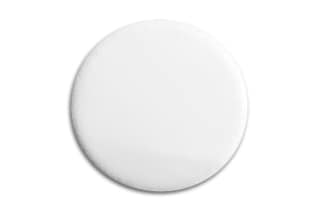
Hydrophobic, polytetrafluoroethene (PTFE) membranes are recommended for use with non-aqueous solvents. Organic-based, highly acidic or basic samples and solvents.
|
UNSPSC |
41104918 |
|
Product Type |
Filtration |
|
Units per Package |
100 pk |
|
Diameter |
47 mm |
|
Format |
Solvent Filter |
|
Pore Size |
0.2 µm |
|
Separation Mode |
Non polar |
|
Filter Type |
PTFE |

PTFE CR Solvent Filter, 47 mm, 0.2 µm, 100/pk
Utilize the PTFE CR Solvent Filter to carry out the extraction and filtration of potent solvents and organics with ease. The lab's HPLC-certified equipment guarantees low extractables and offers superior filtering for analyzing materials. This polytetrafluoroethylene (PTFE) membrane is hydrophobic and can be used with organic-based, strongly acidic, basic, or non-aqueous solvents. The hydrophobic polytetrafluoroethylene membrane atop a polypropylene support makes up the housing of the PTFE CR Solvent Filter, which makes it perfect for filtering organic liquids.
The PTFE CR Solvent Filter has been verified for compatibility with typical HPLC solvents using well-known HPLC techniques, so you can be confident that it will work with HPLC. A very sensitive HPLC method is used to evaluate representative samples with low levels of UV-detectable extractables to make sure that this is the case. The PTFE CR Solvent Filter is appropriate for the majority of filtrations, but it's vital to keep in mind that it hasn't been cleared for use in any procedures involving patients that are clinical, medical, or surgical. On the other hand, the PTFE CR Syringe Filter can be utilized for high-quality extractions and filtrations in life science, pharmaceutical methods, research and development, quality control, and specialized environmental applications.
With the help of cutting-edge separation technology, the PTFE CR Solvent Filter is created, guaranteeing precise pore size ratings for enhanced instrument and column protection. Additionally, it offers consistent analytical outcomes from one lot to the next and low extractable components for little chromatographic interference. Additionally, the building materials were selected and constructed with analytical analysis in mind, having lesser extractables and reduced API adsorption.
Waters carries a wide range of filtration products, which you may learn more about on our website. You may quickly shop for lab equipment via our online store. You might also want to take a look at the wwPTFE Acrodisc Solvent Filter, 0.45 μm 47 mm 50/Pk. These membranes are a "new generation" all-purpose hydrophilic membrane for aqueous, acidic, basic, non-aggressive organic, and aggressive organic solutions. Low levels of UV-absorbing extractables are available, as well as low protein binding. (For more information, see: White Paper: April 2021 720007171EN: Acrodisc wwPTFE Syringe Filters Versus Syringe Filters with Hydrophilic Polypropylene (GHP) Membranes.)
Describe The Effect of Temperature on Liquid Chromatography?
Analytes are either dissolved in the mobile phase or adsorbed to the stationary phase of the column during the equilibrium reactions that make up chromatography. The exchange of analytes between the mobile and stationary phases happens more quickly at higher temperatures. Higher temperatures subsequently speed up the analysis.